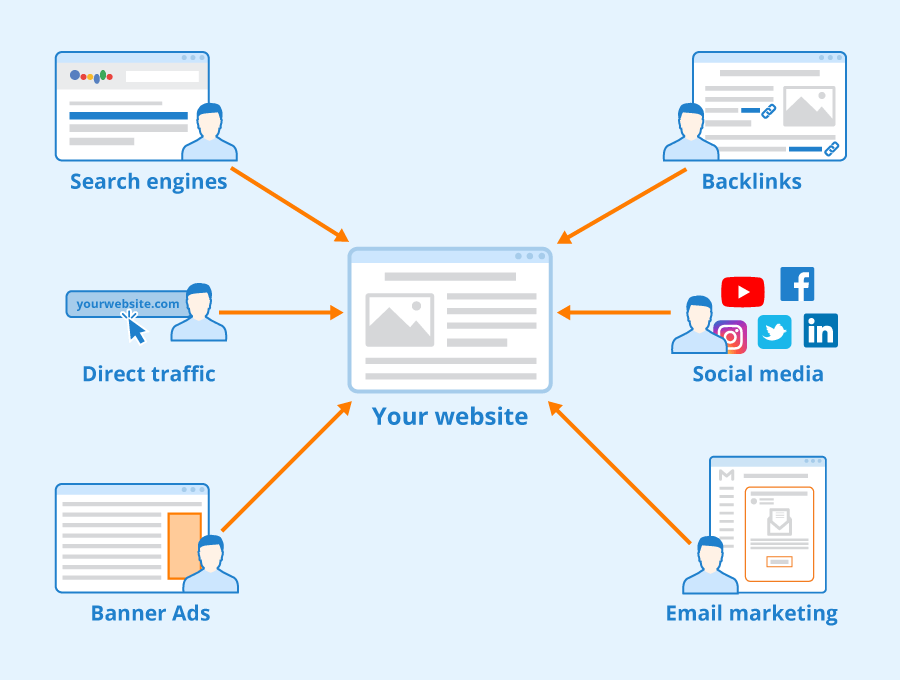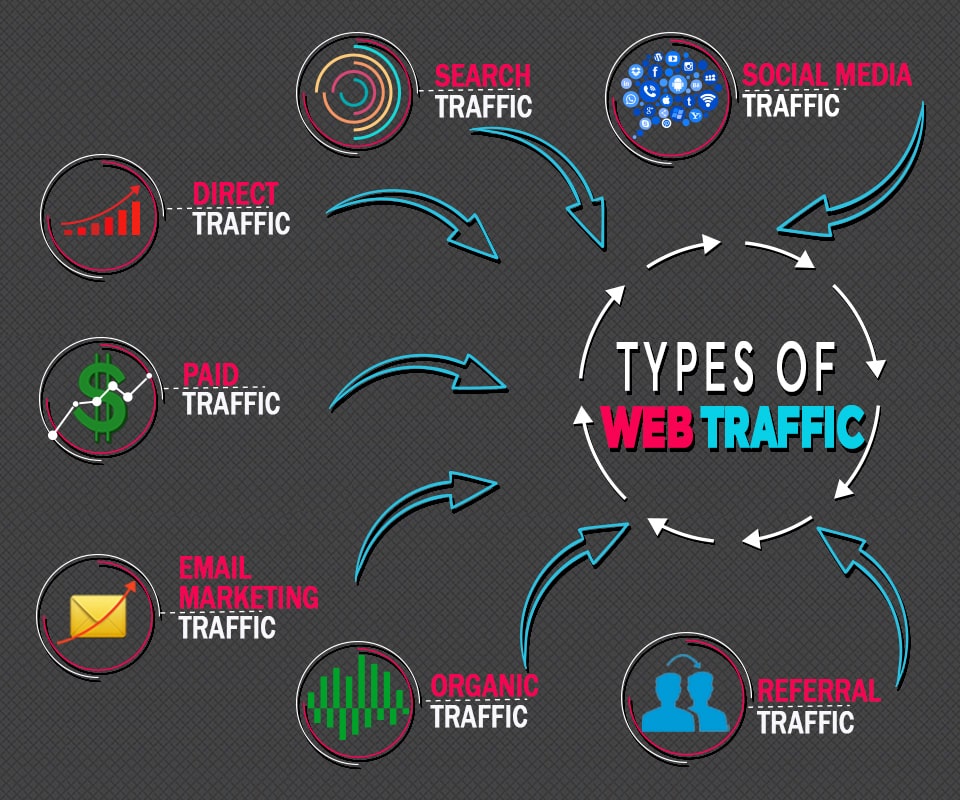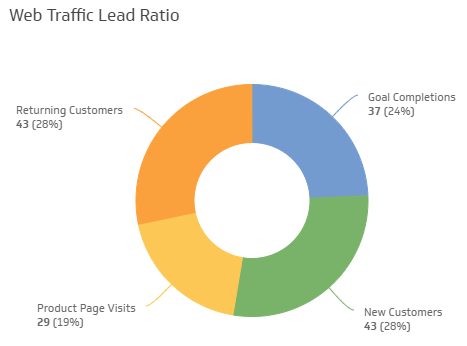In today’s digital marketing world, having a website is essential. A website, regardless of industry, can help you establish a brand presence and boost visitors in a short period of time. As more and more customers are moving online, having a website is critical for generating profit and visibility. It is not only beneficial in attracting new clients, but it also aids in maximizing your company’s potential by speeding growth.
Every website owner wants more traffic to their site. Higher the number of visitors, the higher the chances of initiating action on the site. An action could be signing up for a newsletter, buying a product or service, downloading a file, etc. One of the best ways to measure the success of the site is to find out the amount of traffic it gets.
Page Contents:
What is Website Traffic?
Website traffic is defined as the number of persons visiting a website at any given point in time. It is calculated using ‘sessions’. When a user views a particular number of pages or pages within a given time frame that is known as a session.
Analyzing your website traffic is crucial to determine the behavior of your target audience and identify the steps needed to increase the number of visitors and conversions.
A website traffic checker helps you in understanding user behavior and provides information about how many people visit your site. When you know how the user behavior is, you can implement strategies and create content that they are most likely to click on. This, in turn, improves your conversion rates thereby building a strong customer base.
Knowledge about how much traffic your site is getting can help you understand where your target audience is visiting and what is enticing them to make a purchase. Monitoring how much traffic your competitor sites are getting is significant for the success and growth of your business.
Other than the number of website visitors, you also get to track where the site traffic is coming from, what pages are most visited, and how much time is spent by the visitors on your website.
A website traffic checker provides information about:
- Number of website visitors
- Visitors’ actions on the website
- Details of website optimization and promotion
- Overall website performance
Types of Website Traffic
Direct Traffic: When a visitor visits your website by typing the site URL in the browser or via a bookmark saved in the browser, such kind of traffic is termed Direct Traffic.
Organic Traffic: Once your website is optimized and visible to search engines, this kind of traffic is Organic Traffic. It is a non-paid medium of earning traffic and boosting click-through rate through Search Engine optimization.
Referral Traffic: It is the traffic that lands on your website through external sources such as another website or forums linking to your site URL.
Social Traffic: The traffic received on your website through social media shares is known as Social Traffic.
Metrics governing Website Traffic
Sessions: When a user views a particular number of pages or pages within a given time frame that is known as a session. The session gets over when the user leaves the website or remains inactive for more than 30 minutes.
Pages per session: This metric provides information on how many pages are visited by the user during a single session.
Bounce rate: It is defined as the percentage of visitors who leave the website within 15 seconds after visiting it.
Unique users: It denotes the number of individual visitors that have visited the website in certain time duration.
Traffic sources: It is a metric that indicated the device (computer, tablet, smartphone), social media channel, and geographical location used to access the site.
How to check competitors’ Website Traffic?
Find out your competitors
Searching about your products or services on the Google search bar will give you a list of the competitors in your industry and niche. You can search for trending topics, the latest news, and industry-related happenings to identify potential competitors.
Start grouping them into categories
Categorize businesses on the level of competition in which they are currently at. You can explore questions such as:
- Your competitor is targeting the same audience or they have a totally different target audience.
- Whether your competitors are small-scale business owners or big industry giants.
It gives you data and insights enabling you to set realistic targets to discover growth points and surpass the competition.
Analyze your competitor’s websites
Take a look at your competitor sites to notice their performance and get some new ideas for your business. View the homepage of a site, and check how the navigation is and its page loading speed. Also, you can view how the call to action buttons are structured and positioned throughout the website. Understanding how competitors are performing can help you shape your strategy and maximize your business potential.
Look at the number of social media shares
Greater the number of shares, the greater the visibility and engagement rates. With the number of posts shared on social media platforms, you get an idea of how the site is performing and its popularity among the target audience. Also, you can view the comments on blogs and posts. A site with a large number of positive comments indicates that it is popular and people are leaving behind their feedback and comments.
Tools to check competitor sites’ traffic
SimilarWeb
It is a tool that provides traffic estimates of websites from multiple sources. Besides providing an overview of the number of website visitors, it also displays traffic breakdown country-wise.
Ahrefs
Using this tool, you can monitor the traffic your competitor sites are getting and even view the web pages that are driving the most amount of traffic.
Alexa
It is a traffic estimation tool and provides competitor websites data such as the percentage of traffic a site is getting as well as its competitor average.
Semrush
It is a famous SEO tool that provides information regarding the overall traffic a website is getting.
A website is an important tool for reaching out to the masses, building brand awareness, and plays a major role in moving people through the sales funnel. Estimating website traffic helps you gather insights on implementing the right SEO strategies necessary to build a successful blog or website.


